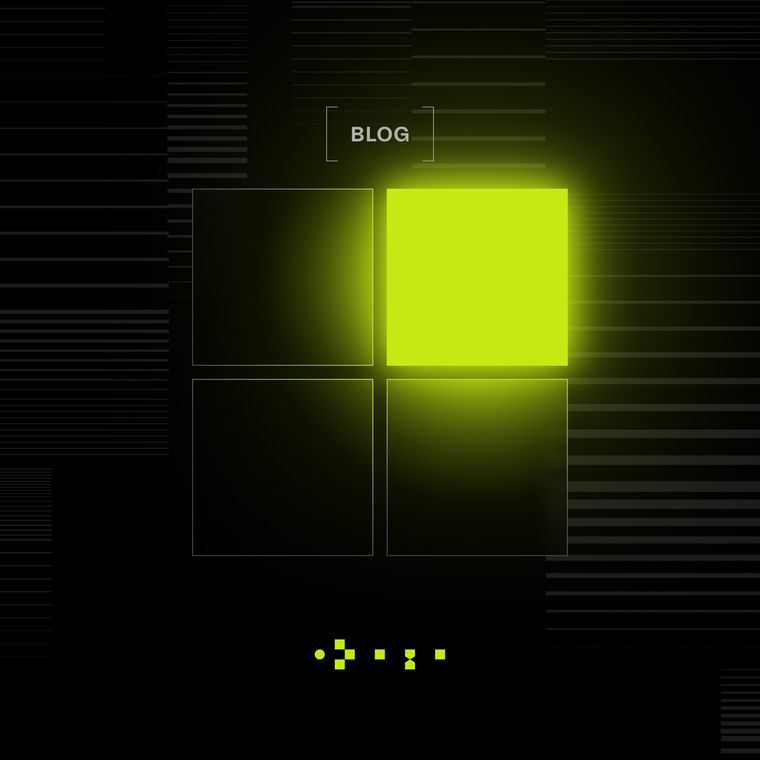Transform Your Vendor Assessment with a Comprehensive RFI Template
Learn how to strengthen vendor assessments and ask better questions with a cybersecurity RFI template.
June 12, 2025
Organizations often rush through or skip the request for information (RFI) stage when buying cybersecurity solutions.
This is a critical mistake.
A strong RFI template helps you gather essential intelligence about vendors' capabilities before making purchasing decisions. Unlike requests for proposals (RFPs) or requests for quotes (RFQs), RFIs allow you to explore available solutions without committing to specific pricing or contracts.
Skipping the RFI step risks:
Security gaps and increased attack exposure
Compliance violations and regulatory penalties
Poor vendor fit and wasted investments
An effective RFI lets you systematically compare vendors against consistent criteria and improve vendor risk management. A well-designed RFI template standardizes your evaluation process, aligns vendors with your security needs, and strengthens communication throughout the selection cycle, improving email communication with potential partners and strengthening cybersecurity due diligence.
Cybersecurity RFI Template for Smarter Vendor Evaluations
Use this RFI template to standardize vendor responses, uncover key capabilities, and strengthen your cybersecurity decision-making process.
Section 1: Company Overview
Start by gathering key background information about the vendor to assess stability, experience, and customer base:
Company name, headquarters location, and year founded
Ownership structure and parent organizations (if applicable)
Financial stability indicators (funding rounds, profitability, public/private status)
Number of employees globally and regionally
Primary security solutions offered
Notable customers or industry sectors served
Understanding the vendor’s background helps you identify partners with proven success supporting organizations like yours.
Section 2: Compliance and Certifications
Compliance signals a vendor’s commitment to maintaining security and regulatory standards. Request evidence of:
SOC 2 Type II certification and latest audit reports
ISO 27001 certification and ISMS practices
GDPR, HIPAA, PCI DSS, or other applicable compliance
FedRAMP authorization (if required)
Third-party security assessments and penetration testing results
Other relevant industry-specific certifications, like CMMC (Cybersecurity Maturity Model Certification) for defense contractors
Vendors that maintain rigorous certifications demonstrate alignment with global security best practices.
Section 3: Technical Capabilities
Dig into the vendor’s technical capabilities to confirm compatibility with your environment and future growth plans:
Supported platforms, operating systems, and environments
Deployment models (cloud-native, on-premises, hybrid)
Integration methods (APIs, connectors, ecosystem compatibility)
Scalability details for growing environments
Average system performance benchmarks and latency rates
Use of AI and behavioral analysis for anomaly detection
Methods for identifying sophisticated email threats, including business email compromise (BEC), vendor impersonation, and QR code phishing attacks
Strong technical foundations ensure the solution integrates smoothly into your existing security stack.
Section 4: Key Security and Risk Capabilities
Ensure the vendor offers modern defenses against evolving threats:
Protection against phishing, ransomware, and supply chain attacks, including vendor email compromise and executive impersonation attempts.
Ability to detect multi-factor authentication bypass attempts
Threat intelligence sources and update cadences
Vendor ecosystem anomaly detection using tools like VendorBase
Transparent false positive rates and tuning options
Solutions that leverage behavioral insights deliver stronger protection against sophisticated attacks.
Section 5: Deployment and Integration
Clarify what’s required to successfully deploy and maintain the solution:
Estimated deployment timeline and resource requirements
Integration details for Microsoft 365, Google Workspace, and other systems
API and automation capabilities for incident detection and response
Migration and onboarding support options
A smooth deployment process minimizes disruption and accelerates time-to-value.
Section 6: Support and Service-Level Agreements
Review the vendor’s ability to support you during incidents and day-to-day operations:
Support hours, including 24/7 coverage for emergencies
SLA details: guaranteed response and resolution times
Access to incident response teams and technical account managers
Post-incident reviews and service improvement plans
Reliable support models ensure faster recovery when incidents occur.
Section 7: Pricing and Total Cost of Ownership
Request transparent, full-lifecycle pricing information:
Licensing models (per user, mailbox, flat rate, etc.)
Implementation and onboarding fees
Training and maintenance costs
Estimated three-year total cost of ownership
Renewal pricing structures and escalation models
Understanding total investment costs prevents surprise expenses down the line.
Section 8: Smart Vendor Evaluation Questions
Finally, embed these 10 questions to probe deeper into vendor capabilities beyond marketing materials:
How does your solution prevent attacks that bypass traditional defenses, including MFA bypass?
Describe your detection and response process for BEC.
What is your average detection and containment time for critical incidents?
How does your solution integrate with our existing security tools?
What measurable ROI can customers expect?
How do you adapt your detection capabilities to new and evolving threats?
Which compliance certifications do you maintain and update?
How do you protect against supply chain threats like vendor email fraud?
What does your incident support model look like during active breaches?
What is your documented false positive rate?
These questions help separate marketing claims from real-world capabilities, giving you the information needed to make confident, risk-aligned vendor selections.
How to Score and Compare Vendor Responses Using Your RFI Template
A structured scoring methodology ensures you objectively compare cybersecurity vendors based on technical capabilities, risk profiles, and operational resilience, and select the solution that best fits your security needs.
Use these approaches to standardize evaluations and improve decision-making.
Implement a Simple Scoring Methodology
Start with a straightforward numerical rating system by assigning scores of one to five for each question or requirement.
1 = Needs improvement
3 = Meets basic requirements
5 = Exceeds requirements with additional value
This method enables quick screening but treats all criteria equally.
For email security vendors, you might rate their ability to detect phishing attacks, remediate threats automatically, and integrate with existing infrastructure.
Apply a Weighted Scoring System
Weighted scoring accounts for the varying importance of different capabilities:
Assign higher multipliers to critical features (e.g., 10x for detection accuracy).
Apply medium weights to secondary features (e.g., 5x for reporting capabilities).
Use lower multipliers for nice-to-have features (e.g., 2x).
Multiply scores by their assigned weight, then total the results. For example, Abnormal customers have found that heavily weighting detection accuracy and low false positive rates highlighted the platform’s strength in behavioral AI.
Create Custom Evaluation Scorecards
Tailor your evaluation scorecards to your organization’s specific needs:
Include technical capabilities, service levels, compliance adherence, and total cost.
Standardize formats to simplify comparisons.
Involve stakeholders across security, IT operations, compliance, and finance to capture diverse perspectives.
For example, when evaluating email security vendors, you might heavily weight the ability to detect socially engineered attacks and Vendor Email Compromise (VEC) in financial services—a critical gap that traditional solutions often miss.
Organizations that adopt multi-stakeholder evaluations often uncover hidden strengths: Abnormal customers, for instance, have reported a three-year ROI of 278% by reducing security incidents and operational costs.
Customizing Your RFI Template for Different Security Tools
Different cybersecurity tools protect against different risks. To gather the most relevant information during vendor evaluations, customize your RFI template based on the specific type of solution you're assessing.
Here’s how to tailor your RFI for three common cybersecurity categories.
Customizing for Email Security Solutions
Email remains the most targeted attack vector for threat actors, making it critical to evaluate vendors against modern risks.
Focus your RFI template on:
Advanced Threat Detection: Capabilities to block phishing, BEC, and socially engineered attacks like RFQ Scams.
Data Loss Prevention (DLP): Controls to prevent sensitive information leaks and support enterprise email protection.
Account Takeover Protection: Behavioral detection of compromised accounts.
Cloud-Native Integration: Seamless API-based connection with Microsoft 365 and Google Workspace without requiring infrastructure changes (Enhancing Microsoft Email Security).
Behavioral Analysis Approach: Focus on baseline behavior deviations, not just signature-based detection.
Use these sample RFI questions:
How does your solution detect and remediate social engineering attacks without malicious links or attachments?
How do you establish behavioral baselines to identify anomalies like Vendor Email Compromise?
What API-based integrations do you offer, and how do they differ from legacy gateway models?
How does your solution reduce investigation time for email threats?
Customizing for Endpoint Protection Platforms
With remote work and bring your own device (BYOD) adoption, endpoints have become primary targets. Customize your RFI to highlight:
Endpoint Detection and Response (EDR): Real-time monitoring, automated response, and threat hunting capabilities.
Next-Generation Prevention: Protection beyond traditional antivirus, including exploit and fileless malware prevention.
Behavioral Analytics: Detection of suspicious behaviors rather than relying solely on known signatures.
Device Management: Inventory control, health monitoring, and policy enforcement.
Zero Trust Alignment: Continuous verification and least-privilege enforcement across devices.
Use these sample RFI questions:
How does your solution detect fileless malware and living-off-the-land attacks?
How do you protect disconnected endpoints without continuous cloud access?
How does your EDR solution balance minimizing false positives with detecting novel threats?
How do you support endpoint protection in highly regulated environments?
Customizing for Managed Detection and Response (MDR) and Managed Security Service Provider (MSSP) Selection
Managed security services require different evaluation criteria.
Focus your RFI template on:
24/7 Monitoring: Structure and staffing of Security Operations Centers (SOCs).
Incident Response Capabilities: Escalation processes, detection speed, and containment strategies.
Threat Intelligence Integration: How external intelligence is incorporated into monitoring workflows.
Customization Flexibility: Ability to tailor services to your industry, risks, and maturity.
Reporting and Metrics: Visibility into performance, incident metrics, and executive summaries.
Here are some questions to use:
How do you assess and customize monitoring for our specific threat landscape?
What are your average times for detection and response across incident categories?
How do you incorporate industry-specific threat intelligence into your operations?
How do you triage alerts to reduce false positives and avoid overwhelming internal teams?
Free RFI Template Download
Accelerate your vendor evaluation process with our comprehensive cybersecurity RFI template, built to standardize information gathering and improve decision-making.
This ready-to-use template includes:
Pre-formatted sections for company background, compliance certifications, technical capabilities, deployment details, and support models.
Embedded smart evaluation questions across email security, endpoint protection, and MDR/MSSP services.
Customizable scoring frameworks, including simple and weighted scoring methodologies.
Risk assessment criteria to evaluate vendor security practices and organizational stability.
Standardized response fields to simplify vendor comparisons and streamline reviews.
You can easily tailor the template to prioritize different cybersecurity solutions by adjusting the technical requirements and evaluation weighting.
Build a Smarter Vendor Evaluation Process with an Effective RFI Template
A well-structured RFI process helps security teams make smarter, faster cybersecurity investments. By matching vendor capabilities to your specific needs through a detailed RFI template, you ensure the solutions you implement truly strengthen your defenses, not just check boxes.
Security platforms deliver the most value when they integrate seamlessly into your environment. Solutions like Abnormal enhance Microsoft 365 and Google Workspace without disrupting existing workflows, providing advanced protection through behavioral data science and API-based architecture.
Organizations that deploy Abnormal have seen the following results, according to Forrester’s Total Economic ImpactTM Study:
They saw 278% ROI within three years
They saved $4 million in potential BEC losses
Their SOCs saved 5,000 hours annually using automation
As threats evolve, prioritize partners who leverage behavioral AI to detect and remediate sophisticated attacks automatically, improving security outcomes while reducing workload for your team.
Ready to protect against modern threats like Vendor Email Compromise? Learn how Abnormal can help.
Related Posts
Get the Latest Email Security Insights
Subscribe to our newsletter to receive updates on the latest attacks and new trends in the email threat landscape.


